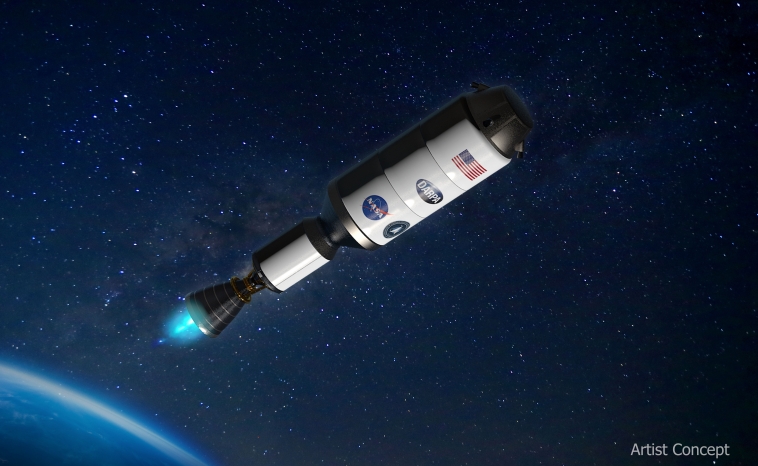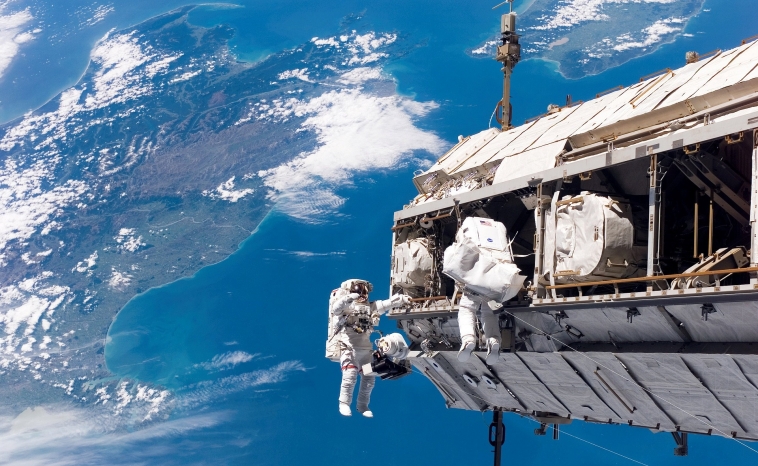NASA To Test Mars Mission Nuclear Engine

As we venture further into space, new and improved technology is required to bring previously unattainable destinations into reach. In an exciting development, NASA has this week announced plans to develop a new nuclear thermal rocket engine to help take humans to Mars for the first time.
On Tuesday, NASA and the Defense Advanced Research Projects Agency (DARPA) announced a joint project to develop and demonstrate a new nuclear thermal rocket engine. It’s hoped that the rocket, currently scheduled for release in 2027, will play a massive role in the first crewed missions to Mars, our nearest planetary neighbour.
DRACO Program
The Demonstration Rocket for Agile Cislunar Operations (DRACO) program will be the first nuclear thermal rocket engine test in the USA since NASA’s Nuclear Engine for Rocket Vehicle Application and Rover projects over fifty years ago. NASA administrator Bill Nelson said: “NASA will work with our long-term partner, DARPA, to develop and demonstrate advanced nuclear thermal propulsion technology as soon as 2027. With the help of this new technology, astronauts could journey to and from deep space faster than ever – a major capability to prepare for crewed missions to Mars.”

DARPA, Public domain, via Wikimedia Commons
Credits: DARPAHow Long Does It Take to Get to Mars?
Space agencies must carefully plan journeys to Mars. Due to the planet’s highly elliptical orbit, its distance from Earth can be anywhere from 55.4 to 400.2 million km away! To cut down travel time, any crewed mission to Mars must launch at the right time to minimise distance – and these launch windows only come around every 26 months. Even then, with current chemical rocket technology, it takes around nine months to travel each way between the planets.
How Does Journey Time Effect NASA’s Crewed Missions to Mars?
Long space journeys come with logistical problems and potential risks to human health. The longer astronauts are away from Earth, the more supplies they will need – food, water, clothing, medical supplies, and fuel. In fact, the amount required is so large that even getting it all into orbit is a challenge – never mind sending it to Mars!
In terms of human health, there are two main risks. Firstly, all space travel results in exposure to radiation that we would usually be shielded from by the Earth’s magnetic field. Shielding can mitigate some of the dangers of radiation in space, but unfortunately, many shielding options, such as water, are heavy. The other major worry is muscle atrophy and loss of bone density. In the weightless environment of space, the human body doesn’t need to work as hard to support itself, leading muscles to waste away. Similarly, bone calcium levels reduce after significant time spent in space, resulting in lower bone density. If astronauts don’t receive protection from these risks, the effect on their bodies can be catastrophic when they return to a gravity-rich environment.
NASA, Public domain, via Wikimedia Commons
What Are the Benefits of Nuclear Thermal Rockets?
Nuclear thermal propulsion engines provide higher thrust than the currently used chemical rocket engines, with twice the propulsive efficiency. This increased thrust would significantly reduce journey times between Earth and Mars, with many benefits. A shorter journey time decreases astronauts’ health risks and reduces the required supply payload. As nuclear thermal rockets are up to three times more efficient, less fuel is also required, saving even more weight and cost. And the reduced payload of essentials means more room for scientific instruments – so astronauts could learn even more when they arrive at the Red Planet.
To Boldly Go
While we’re still a few years away from seeing the first footsteps on Mars, ongoing developments from NASA, along with private ventures such as SpaceX, show that we’re getting tantalisingly close to visiting new worlds and reaching further out into the cosmos than ever before. Until then, why not explore the universe in our One Million Stars App and learn more about the constellations in our galaxy?

